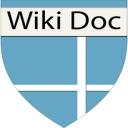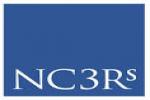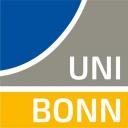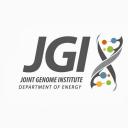NOVELTIES
Mendeley is a free reference manager and an academic social network. Manage your research, showcase your work, connect and collaborate with over five million researchers worldwide (ref Singh J, J Pharmacol Pharmacother 2010 Jan;1(1):62-3) Registration required.
Click here for more informationsPublished on 2016-09-09 08:05:19
The SRMAtlas is a compendium of targeted proteomics assays to detect and quantify proteins in complex proteome digests by mass spectrometry. It results from high-quality measurements of natural and synthetic peptides conducted on a triple quadrupole mass spectrometer, and is intended as a resource for selected/multiple reaction monitoring (SRM/MRM)-based proteomic workflows (See Kusebauch, U. et al., Cell 166: 766, 2016; Doerr A, Nature Meth 13:712, 2016) Registration not required.
Click here for more informationsPublished on 2016-08-30 11:47:35
The Exomiser is a Java applicationthat that finds potential disease-causing variants from whole-exome or whole-genome sequencing data. It is an opensource Java software package that can be downloaded and run on a single desktop computer. It filters and prioritizes candidate genes and variants from whole-exome or wholegenome sequencing data, with a special focus on phenotypic data. Users enter a patient’s clinical features and exome into the program, and Exomiser generates a scored list of candidate variants based on how frequently a variant occurs in the broader population; the type of mutation and how disruptive it may be; and potentially related genes, which may be implicated in a particular disease or clinical feature.(Smedley et al., Nature Protocols 10:2004, 2015). Registration not required.
Click here for more informationsPublished on 2016-08-18 10:44:43
Galaxy is an open source, web-based platform for data intensive biomedical research whose purpose is to make complex analysis more accessible. It is a useful tool for bioinformaticians and DNA sequencers. Galaxy provides a point-and-click web interface alternative to the bioinformatics command line, thus allowing researchers to easily create, run, and troubleshoot analytical pipelines (see Perkel JM, The Scientist 08/2016, p 57). Registration required.
Click here for more informationsPublished on 2016-08-03 07:39:26

Add to my favorites
Remove from my favorites
Category: Gene expression, DNA microarray data analysis
Subcategories: NCBI
The Gene Expression Omnibus (GEO - NCBI) is a public repository that archives and freely distributes microarray, next-generation sequencing, and other forms of high-throughput functional genomic data submitted by the scientific community. In addition to data storage, a collection of web-based interfaces and applications are available to help users query and download the experiments and gene expression patterns stored in GEO. Registration not required.
Click here for more informationsPublished on 2016-04-20 13:46:31
The EDA allows scientists to create a visual representation of an animal experiment by laying out its key elements — hypothesis, experimental method and planned analysis — in logically connected, coloured boxes. The software then uses a built-in set of rules to spot potential prob¬lems, and suggests refinements. These may be simple — the researcher hasn’t specified how to randomize animals to the control or treatment arm — or more complex: there are potential confounding variables in the control and trial arms. The tool can also assist scientists with calculating the sample size needed to ensure a sta¬tistically robust result, or with randomization (see D Cressey, Nature 531:126, 2016; Percie du Sert1 et al., Nat Meth 14:1024, 2017). Registration required.
Click here for more informationsPublished on 2016-03-08 09:39:08

Add to my favorites
Remove from my favorites
Category: Biomedical funding and jobs
Subcategories: Fellowships
The European Association for the Study of the Liver (EASL) Post-Doctorat Fellowship, Entry Level Fellowship and Short-Term Fellowship programmes are open to all registered EASL members and aim to enhance the mobility of investigators within different European institutions, to actively promote scientific exchange among research units in hepatology. Registration not required.
Click here for more informationsPublished on 2016-02-24 03:37:12
Publons allows researchers to post online profiles with bios and peer-review histories. Users receive Publons “merits” for their reviews and are incentivized by a leaderboard, with quarterly awards for the top three reviewers overall and the top reviewers in particular fields and institutions, Registration required.
Click here for more informationsPublished on 2016-02-12 08:55:24
Idealist is an online job site that helps in finding the type of non-profit organizations that dovetail with one’s interests. Registration not required.
Click here for more informationsPublished on 2015-11-13 12:31:19
BrowserGenome is a web-based deep-sequencing data-analysis platform offering barcode deconvolution, read mapping, real-time data visualization, transcript-count analysis and data normalization. BrowserGenome is specifically focused on the evaluation of mRNA-seq data, but it can easily be extended to other applications (Schmid-Burgk JL, Hornung V, Nature Meth 12:1001, 2015).
Click here for more informationsPublished on 2015-11-01 12:58:02
This site focuses on helping researchers make the most informed decisions possible about where to publish their work. It helps also to avoid fake journals. Through a range of tools and practical resources, this international cross-sector initiative aims to educate researchers, promote integrity, and build trust in credible research and publications.(BL Benderly, Science Careers, Octrober 13, 2015: 10.1126/science.caredit.a1500242). Registration not required.
Click here for more informationsPublished on 2015-10-25 11:39:17

Add to my favorites
Remove from my favorites
Category: Continuous data
Simple statistics on one or two samples allows: GraphPad
Descriptive statistics and confidence interval of a mean; Grubbs' test to detect an outlier; t test; One sample t test; post test following two-way (or higher) ANOVA; confidence interval of a sum, difference, quotient or product of two means; Confidence interval of a standard deviation. Registration not required.
Click here for more informationsPublished on 2015-10-22 10:26:07
VecScreen quickly identifies contaminating vectors in your sequence. VecScreen is a system that quickly finds segments of a nucleic acid sequence that may be of vector origin. It helps researchers identify and remove any segments of vector origin before they analyze or submit sequences. Registration not required.
Click here for more informationsPublished on 2015-10-04 11:23:52
ProDeGe is the first fully automated computational protocol for decontamination of genomes. The protocol uses public databases to detect contamination in agenome assembly, then groups contigs into “Clean” or “Contaminant” groups. ProDeGe spits out lists that users can read through to identify contaminants and determine what they mightbe.The standalone software is freely available and can be run on any system that has Perl, R, Prodigal and NCBI Blast installed. (Tennessen et al., ISME J. 2015 Jun 9. doi: 10.1038/ismej.2015.100 [Epub ahead of print]; SCP Williams, The Scientist 10/2015, p71) Registration required.
Click here for more informationsPublished on 2015-10-04 11:18:26

Add to my favorites
Remove from my favorites
Category: Biomedical products search
Subcategories: Antibodies
It is a project listing independent antibody reviews and encouraging people to review antibodies. Registration required.
Click here for more informationsPublished on 2015-09-17 11:15:41

Add to my favorites
Remove from my favorites
Category: Biomedical products search
Subcategories: Antibodies
A database to find commercial antibodies, peptides, kits, proteins, etc. Registration not required.
Click here for more informationsPublished on 2015-09-17 11:06:36

Add to my favorites
Remove from my favorites
Category: Biomedical products search
Subcategories: Antibodies
An open-access database of publicly available antibodies against human protein targets. The site features user and provider data on antibody efficacy in a range of biochemical and cell biological techniques--so you can find the right antibody for the right application Registration not required.
Click here for more informationsPublished on 2015-09-17 11:01:54

Add to my favorites
Remove from my favorites
The Living Textbook of Medicine
Category: Literature search
WikiDoc was created to freely share medical knowledge and to foster collaboration among healthcare providers. Launched by Dr. C. Michael Gibson of Harvard Medical School in late 2005, WikiDoc is the first and largest wiki dedicated to medicine on the Internet. WikiDoc is kept up to date by over 5,000 collaborators around the world. The content has now been updated nearly half a million times. There is no pharmaceutical or device industry support for the site. WikiDoc is intended to be a free shared resource for housestaff (in preparation for morning report), medical students (in preparation for morning rounds) and fellows (in preparation for conferences). Nurses and attending physicians may find WikiDoc valuable in improving and maintaining their fund of general medical knowledge. Registration not required.
Click here for more informationsPublished on 2015-06-08 03:33:02
This website from Dr, Hossein Arsham of the University of Baltimora, offers the opportunity to calculate several probabilistic models and statistical analyses on line. Although mainly business oriented, is very useful also for biomedical scientists. Registration not required.
Click here for more informationsPublished on 2015-06-04 03:58:08
This converter calculates the measured value in units of [ppm] into units of [mg/m3] and visa versa. Registration not required.
Click here for more informationsPublished on 2015-05-12 08:18:00














